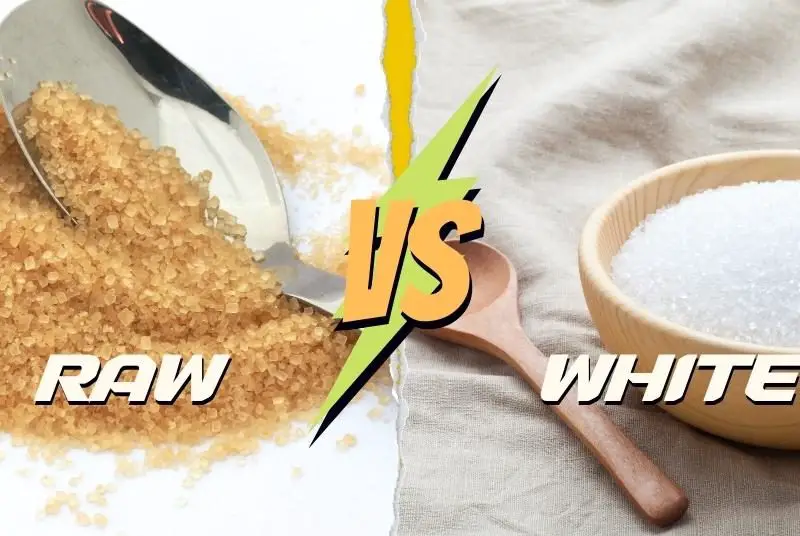I am a well-rounded expert with proficiency in several fields. My experience spans from being a dedicated chef and homemaker. As a passionate homesteader, I’ve honed my skills in sustainable living and animal care, ensuring a holistic approach to everything I undertake. Email me or Txt: (# removed due to spam, please email)
Ever open up a box of pancake mix or some flour only to discover it completely infested in insects? The first time it ever happened to me came as a complete shock. I was itching all over for at least a solid week. It’s a traumatizing experience to be sure.
Your entire child-like reality is crushed the moment you realize you’ve probably been eating bug eggs and bug bits your entire life! Also, I’m so very sorry if your innocence has lasted this long and I just killed it. My bad.
There’s a ton of ways bugs can get into your sealed packages, Sometimes they bury in due to weak packaging materials, Sometimes they’re born inside the food itself! I know it’s a terrifying mental picture.
My foods supposed to be safe what gives!!!!1111
Bugs are like water, they will always find a way in. Let’s go through some of the typical ways a bug gets into your food or pantry and what you can do to prevent it and feel much better about yourself.
Weak Packaging
First let’s start off with the strongest materials. Glass, hard plastic with a seal, cans. OK that’s all, sorry.
As you can see most packaging in the grocery store is not made out of these harder materials. Why? Because they are expensive, heavy, and unwieldy. So it’s not so much a surprise most food manufacturers prefer to use light plastics and paper.
Fortunately for your bugs, Paper and light plastics and foams are super easy to get through. No matter how sealed you think some of these are, bugs will always find a way in. Threw air holes or seams, even threw stitching holes you get on some thicket heavy-duty paper (like sacks of potatoes).
Basically rule of thumb is, if you can smell the food inside the package, the package can be infested with insects.
Where do these insects come from you might be wondering? Well, most likely they came from your own pantry.
Take a minute to digest that, but don’t go reach for your Raid just yet.
Bugs love a full pantry, it’s one of the best places in the house. It’s dark, somewhat dry, theirs always food crumbs and when the going gets tough, they can just burrow into some packaging. But theirs actually another kind of bug that’s far more prevalent in our opinion, and that’s a bug that comes from most wheat products…
They were born in the food
This part is really going to gross you out. But there is an easy way to deal with it which I will get to later on in this article.
All those black specs inside your pancake mix? It’s very likely they were always there! Truth is grain products are FILLED with insect eggs! They lay dormant from the wheat itself until a bit of moisture in the air forces them to hatch.
That means even if you transfer your goods into a sealed glass jar, there is still a chance it becomes infested with insects as the insects were always there, to begin with.
Removing this type if insect is fairly easy though and there is a few things you can do.
Killing insect eggs in wheat products
The quickest method, and something most people will recommend you do if you intend on storing something long-term in your pantry, is to freeze the content for a couple of days.
Take it out of its paper or cardboard packaging, place it into a sealed glass jar, and stick it into the freezer for a few days. This should kill all the eggs in your flour, pancake mix, cake mix, etc.
Another thing you should head is when buying the product from the store in the first place. Avoid things wheat products that are close to their expiration date, and don’t buy products with damaged packaging.
Damaged packaging can mean 2 things. A place for moisture to get in and kick start those eggs, and a way for other none native bugs to crawl in and start eating and breeding.
Don’t buy packaging that’s on ground level or plain sitting on the ground. The first shelf is usually OK but I prefer to grab things on the second shelf. That could just be my paranoid talking of course.
Just these few steps will most likely prevent you from seeing many more bugs in your future pantry goods, but theirs more you can do to help prevent these annoying pests from mucking about in your food.
Pantry maintenance to deal with insect infestations
Just because you dealt with the native creepy crawlies that happen to already be in your food doesn’t mean you are out of the woods just yet. You still need to deal with the other common pantry pests that like to hide out next to your food.
These pests include things like, red flour beetles, maize weevils, rice weevils, sawtoothed grain beetles, meal moths, dermestid beetles, and about a billion and a half other varieties of pantry insect.
Surly no shortage of house guests. So how do we give them the boot?
First, put all your grains, cereals, pasta, spices, etc into their own sealed glass containers and follow the freezing steps above. That will take care of the inside of the container, And the glass jar will prevent any outside creepies from getting into your newly packaged food. It will also prevent smells from leaking which attracts more.
Rotate your food products. When they get close to expiration, use them, or throw them out and replace them. Don’t keep food way past its expiration date, throw it out. That’s a bug factory waiting for the whistle to blow.
Good sanitation of your pantry, and house, in general, will always give a big anti-bug improvement. You should clean your pantry out every 3 months, and give it a good disinfectant washdown. This will eliminate any bugs, eggs and webs, and food crumbs attracting other insects.
Always clean up spills and crumbs when they happen, don’t let them sit there like an insect buffet waiting for guests to arrive.
Set traps
Traps are always a strong weapon in the fight against bugs. The type of trap you use will depend on the type of bugs you’re dealing with, but a really good one in all situations is sticky paper. Put a piece of that down on the pantry floor or wall and watch how many things you didn’t know you had got stuck.
Share your story with us
Have you ever encountered a huge creepy infestation in your pantry? Pancake mix? Cake batter? Let us know in the comments! We love to know what happened and how you dealt with it. Did our article help? or did you find different solutions that you would like to share? Let us know in the comments below! 🙂




